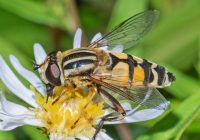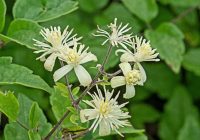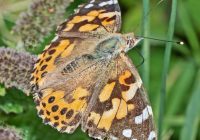Dr Phil Smith’s Wildlife Notes
September 2023
September was the joint warmest on record in the UK, being influenced by high pressure over Europe during the first half of the month. However, the Met Office map shows that most of the heat was in the south; we had just above average temperatures. Although it was dry here until 11th, Rachael Park’s data shows we had a total of 102.5 mm of rain in 15 days. This is 22% wetter than the September average for Formby.
The ‘Indian Summer’ at the start of the month encouraged a proliferation of insect life. The Wicks Lane path and fence produced a Great Pied Hoverfly on Snowberry, a colourful Hawthorn Shieldbug, a Dune Villa on bare sand near picnic tables and a Pale-knobbed Lucent, a hoverfly that was formerly uncommon but which has recently increased on the Sefton Coast. Patches of Michaelmas-daisy, together with Apple Mint at the end of Range Lane, Formby, also had nectaring insects, including my first Large Tiger Hoverflies of the summer. Also, present were five fresh Red Admirals, four Commas, a worn Painted Lady, two Small Heaths, a lovely Small Copper and a very late Grayling, as well as the usual Speckled Woods. Fellow travellers included the parasitic fly Tachina fera and two Dock Bugs, an adult and an immature. Most notable were two female Beewolfs, a species new to me this summer. Pete Kinsella confirms an explosion of Beewolf records along the Sefton Coast this year. Before 1980, this large distinctive wasp was a great rarity in Britain, being Re-listed as ‘Vulnerable’. It has undergone a massive range expansion, no doubt due to climate change. The northernmost record for the west coast is now at Larkholme, Fleetwood, where Andy Beech found one in July this year. How far will it get?
The nearby Ravenmeols grasslands produced two fresh Meadow Browns, making me think these must be a second generation. But no; the literature tells us that this species has only one generation a year but can show ‘delayed emergence’ as late as September. I strolled on to a small area of Rabbit-grazed dune north of the Devil’s Hole. Here a Mottled Grasshopper reminded me of the important role Rabbits once played in maintaining suitable habitat for this and other specialists of short, open duneland turf. Finally, I reached the Devil’s Hole to measure the water-table. Here, I came across a lonely Northern Dune Tiger Beetle. Worryingly, I have seen very few of this Sefton dunes speciality this year. The population seems to have crashed for unknown reasons.
Also at the Devil’s Hole, I continued my long-term study of the hybrid willow Salix ×friesiana. This cross between Creeping Willow and Osier is extremely rare nationally, except on the Sefton Coast. As mentioned in last year’s September notes, I have been marking and measuring a population of the willow in the Devil’s Hole since 2012. This year there were 140 bushes, about the same as in 2022. Fifteen died but were replaced by the same number of new saplings.
In the August notes, I described a survey of invasive Traveller’s-joy on the dunes. This month we found another patch at Birkdale dunes, making a total of 117 patches covering 0.64 ha. Catie Haworth of Merseyside BioBank kindly produced excellent distribution maps based on our data. These will help us to determine where and how the plant is spreading and whether control is needed. It is a big problem elsewhere in Britain, for example on the Lincolnshire dunes, where a lot of money has been spent trying to bring it under control. Traveller’s-joy has also been introduced to many other countries outside its native range. In New Zealand, it infests remnants of native forest and government agencies are trying to eliminate it.
In September, flowering Ivy is a big attraction for late-flying insects, especially the delightful Ivy Bee that reached Sefton from the south in 2018. My only Formby records this month were two at the top of Range Lane; but Southport and Crosby performed better. Despite less than ideal weather, Ivy at Oxford Road, Southport, was graced by a dozen Ivy Bees. There were also two spectacular Hornet Hoverflies. On 24th I made a much-delayed visit to Crosby Coastal Park and the Marine Gardens. Despite windy conditions, there were at least 70 Ivy Bees on sheltered Ivy patches; I also noted three Red Admirals and a battered Painted Lady. I was about to leave when a small black insect landed on an Ivy leaf. It was my main target, a Large Spotty-eyed Dronefly. As the name suggests, it has amazing spotty eyes for reasons that are unclear. This species has a mainly coastal distribution, supposedly breeding in rotting seaweed and, although it is regularly found at Crosby, I had only seen one before. I managed to get a few photos before travelling home in a good mood.







